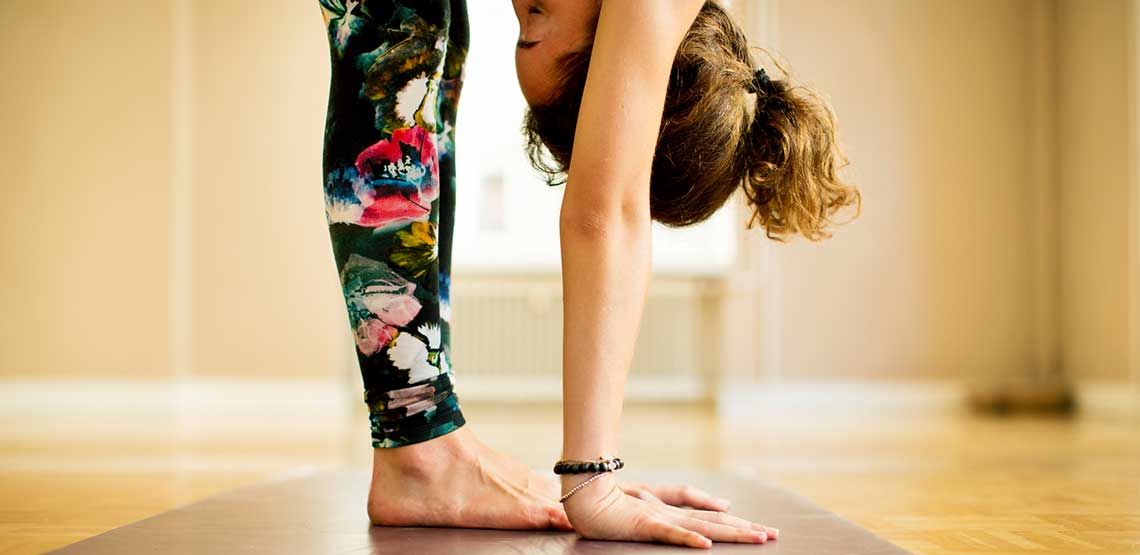Yoga for Flexibility
Did you know that staying flexible can help you maintain mobility well into your later years? And yoga can help you do just that! When you are more flexible, you are less likely to injure yourself, and you are able to move more and be independent. You may even experience less pain!
Flexibility for Disease Prevention
Flexibility refers to your ability to move and bend with ease and without pain or injury. When you are well-stretched, such as through yoga, you can maintain and improve your flexibility. Proper flexibility can also prevent falls from occurring, since you are more agile to catch yourself and also have more balance to prevent the fall in the first place. In turn, this may help prevent chronic disease.
In many instances, when mobility is poorh and movement is limited, a person’s entire health begins to decline. As a result, this can set the stage for various diseases. It can lead to inactivity, which may cause heart disease, diabetes or other life-threatening conditions. In the short-term, it can leave a person unable to perform basic tasks or in pain when performing these tasks.
The Connection Between Yoga and Flexibility
Yoga involves various poses that are held for a certain number of breaths. These poses frequently involve lengthening or elongating of certain muscle groups. For example, downward dog involves the stretching of the whole backside of the body. A forward fold also does similar, while decompressing the spine.
Through continued practice of these poses, or stretches, a person can vastly improve their flexibility, which may help reduce your risk of injury. It helps stretch and improve the range of motion provided by your connective tissues. These connective tissues attach bone to bone and muscle to bone, providing structure to your muscular and skeletal system. By improving the length in which these tissues can stretch, you can increase your range of motion. Yoga is also a great example of low impact exercises.
The Best Types of Yoga to Maintain Flexibility
The best types of yoga to maintain flexibility and mobility from youth to old age include Hatha, Vinyasa and Hot Yoga. These types are explained in more detail below.
1. Hatha Yoga
Hatha yoga is what most people imagine when they think of yoga. It involves holding certain yoga poses while focusing on the breath. It often includes various stretches and balance positions that improve one’s posture and range of motion. It’s very gentle and suitable for all ages and fitness levels.
2. Vinyasa Yoga
Vinyasa yoga involves a more “flow" movement through different poses. This means smooth transitions from one pose to the next. Frequently, you move with the breath as well.
3. Hot Yoga
Hot yoga often includes yin or vinyasa yoga styles. Yin yoga in a hot studio is a great way to improve the mobility and flexibility of your joints. With the warm climate, it is easier to move through your full range of motion with little effort, since your joints and tissues are already warmed up. In yin yoga, you will often hold each pose for two to five minutes, which significantly helps to lengthen the tissues and muscles of the body.
4 Poses to Try
Where should you start? You can look up in-studio or online classes at your local yoga studio. You can also begin with a few basic poses. Try these four to get started:
1. Standing Forward Fold
This is a good one for anyone, and you don’t have to be flexible to do it. Start by standing tall. Fold forward at your hips and just hang out here for a little while. Aim to stay here for at least five breaths. Try your best to keep you back straight. You can let your arms hang, grab hold of each elbow or reach your arms around your legs, whatever is comfortable for you.
2. Cat and Cow Pose
This pose is great for lower back flexibility, which can help reduce your risk of back pain. Begin on all fours. Inhale and slowly bend your back so that your belly is closer to the floor. Extend your neck and bring your gaze up high. Exhale and arch your back. Then, bring your head in between your arms. Continue to do this for five to 10 breaths.
3. Low Lunge
Begin in a low lunge on your mat. Your back knee should be on the ground. Slowly lean into your front leg, keeping your knee at a 90-degree angle. You should feel a gentle stretch through your back leg’s front hip. Hold here for about five breaths.
4. The Sphinx Pose
This is another pose to improve your back and torso mobility and flexibility. Begin lying face down on your stomach. Position your elbow underneath your shoulders with your forearms and palms planted on the ground. Bring your chest up and gaze forward. You should feel a gentle stretch through your chest, abs and low back.
Use Yoga to Improve Your Flexibility!
Yoga is a wonderful form of exercise to help not only improve your flexibility, but also help you relax, increase your overall body strength, and help you live a healthy and happy life into the future. However, consistency is key. Aim to perform the same routine two to three times a week to see noticeable improvements. Your body will thank you!
